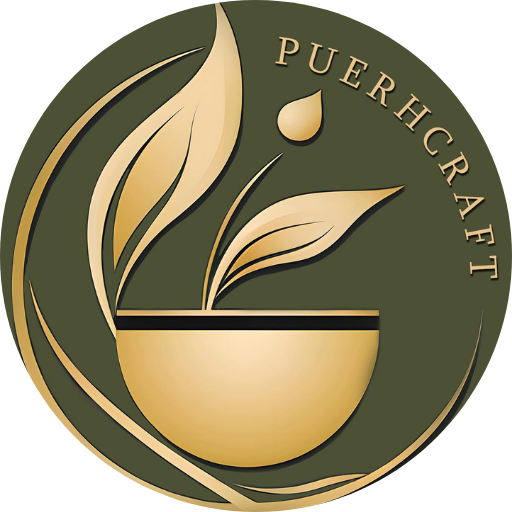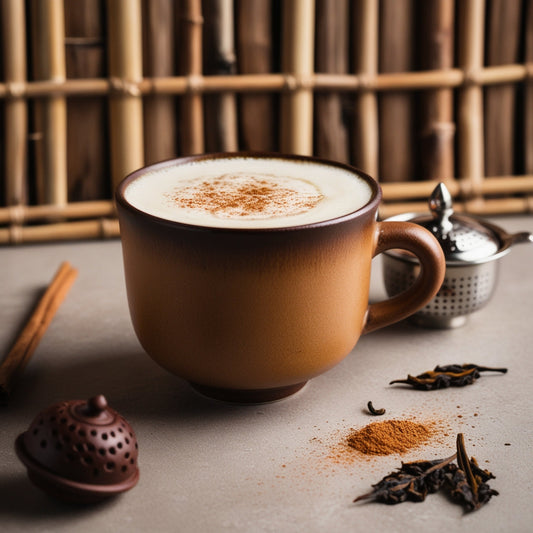Introduction
Tea, enjoyed by two-thirds of the world's population, holds the title of the most popular beverage globally. Among the great variety of teas, Pu-erh tea stands out for its unique characteristics and health benefits. Adding Pu-erh tea to your daily routine can significantly enhance your well-being. Let's dive deep into what Pu-erh tea is made of, its distinct taste, and the complex production processes that contribute to its unique flavour profile.
Table of Content
- What Pu-erh Tea Made Of
- What does pu-erh tea taste like?
- History
- Production Process
- Health benefits
- Conclusion
What Pu-erh Tea made of?
The Camellia sinensis plant's special variety, Yunnan big leaf, provides the leaves for Pu-erh tea. Harvesters usually pick the leaves in the spring and then leave them to wither and dry in the sun. After drying, they roll and twist the leaves, breaking down their cell walls to facilitate the upcoming fermentation process.
What does pu-erh tea taste like?
Pu-erh can have a variety of flavours, including sweet, bitter, floral, mellow, woody, astringent, sour, earthy, watery, or even tasteless. Multiple flavours can be present in a single steeping. The taste also evolves as the tea ages. Raw Pu-erh (sheng cha) and ripe Pu-erh (shu cha) are the two main categories of pu-erh.

Taste of Raw Pu-erh (Sheng cha)
Raw Pu-erh possesses an array of aromas and flavours. It typically has a stronger green vegetal flavour and is generally bitter. However, after several years of natural aging, the bitterness fades, giving way to a delightful aged aroma.
Taste of Ripe Pu-erh (Shu cha)
Ripe Pu-erh has undergone full fermentation, much of the bitterness and astringency inherent in the leaves have dissipated. Ripe Pu-erh is generally earthy, nutty or woody. Good quality aged Pu-erh should be mellow, smooth and offer a sweet aftertaste.
History
Pu-erh tea has its origins in Yunnan Province during the Eastern Han Dynasty (25-220 CE). Traders began trading it in the Tang Dynasty, gained fame for it during the Ming Dynasty, and popularized it in the Qing Dynasty. Mules and horses transported it in long caravans along routes known as the Tea Horse Roads.
Production Process
Harvesting
Pu-erh tea begins with the careful selection and harvesting of the tea leaves. The leaves are typically plucked by hand, ensuring that only the finest and most mature leaves are chosen. This meticulous selection process is crucial for the quality of the final product.
Withering
After harvesting, the tea leaves undergo withering, a process that reduces their moisture content. Harvestersspread out and left to wilt under natural sunlight or in a controlled indoor environment. This step is essential to make the leaves pliable and ready for the next stage.
Pan-Firing
Once the leaves have withered, they are pan-fried to halt the oxidation process. This step, known as "sha qing," involves briefly heating the leaves in large woks. Pan-frying not only stops oxidation but also helps to preserve the leaves' natural green colour and fresh flavour.
Fermentation
Fermentation is the defining step in the production. The leaves are piled and left to ferment naturally, a process that can take anywhere from several months to many years. There are two main types of Pu-erh tea: Sheng (raw) and Shou (ripe). Producers naturally ferment Sheng Pu-erh, while they accelerate the fermentation process for Shou Pu-erh using a technique called "wet piling" (wo dui), where they moisten the leaves and keep them in a warm, humid environment to speed up fermentation.

Health benefits
Health benefits of Pu-erh include Weight management, good for Digestion, reduce oxidative stress and inflammation, enhance insulin sensitivity and reduce blood glucose levels, potentially reducing the risk of cancer.
Conclusion
Pu-erh tea is made from a special variety of the Camellia sinensis plant. Raw pu-erh tastes stronger green vegetal flavour. Ripe Pu-erh is generally earthy, nutty or woody. It has its origins in Yunnan Province during the Eastern Han Dynasty (25-220 CE). Pu-erh harvested by piling and adding water. Withering involves in the drying the leaves on the table. By pan-frying it they stop oxidizing further. Pu-erh is the only tea which is genuinely fermented. Health benefits of it include Weight management, good for Digestion.
Whether you seek a comforting cup with rich, earthy notes or a smoother, more refined brew, Pu-erh offers a flavour journey unlike any other tea. Dive into the world of Pu-erh tea today and discover why this remarkable tea has captivated enthusiasts for centuries. Join the tradition, explore the flavours, and enrich your tea experience with it.
Q.What is the primary ingredient in pu-erh tea?
A:The primary ingredient in pu-erh is the leaves and stems of the Camellia sinensis plant, specifically a variety known as Yunnan big leaf.
Q.How is the tea leaves processed after harvesting to make pu-erh tea?
A: After harvesting, workers wither and dry the tea leaves in the sun. They then roll and twist the leaves to break down the cell walls, making it easier for the subsequent fermentation process
Q.What role do microbes play in the production of pu-erh tea?
A: Microbes, including moulds, bacteria, and yeasts, play a crucial role in the fermentation of pu-erh tea. They metabolize the carbohydrates and amino acids in the tea leaves, contributing to the tea's unique flavour and properties.
Q.What is the fermentation process for pu-erh tea, and how does it affect the tea leaves?
A: The fermentation process for pu-erh involves piling the leaves and adding water, creating an environment ideal for microbial growth. The leaves are left to ferment for several weeks to several months, during which they undergo chemical changes, turning from green to black and developing their distinctive flavour profile.






